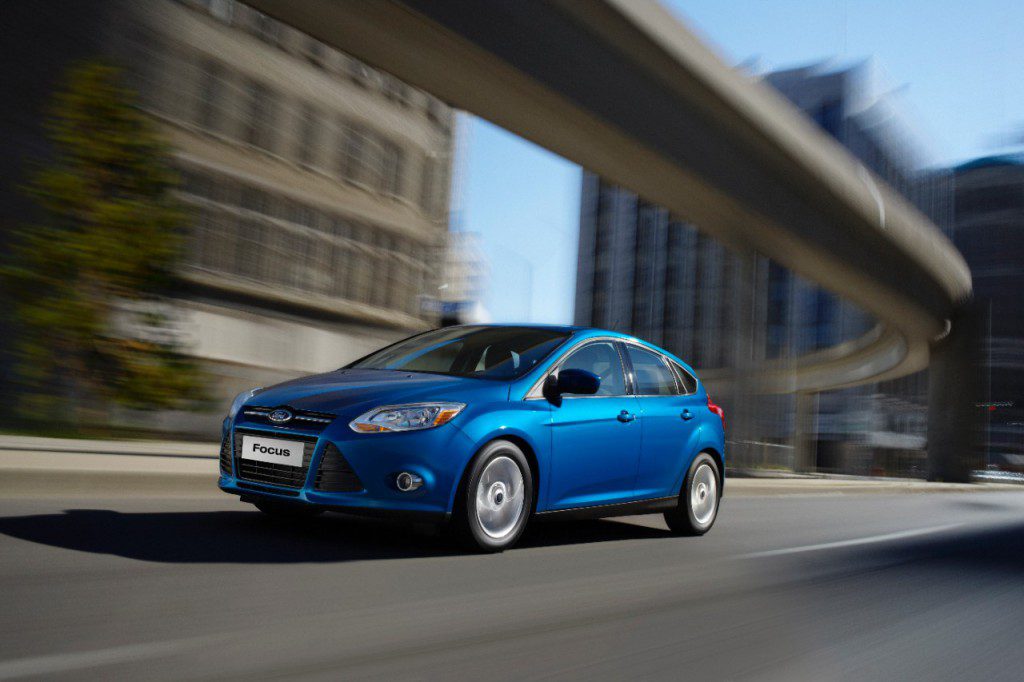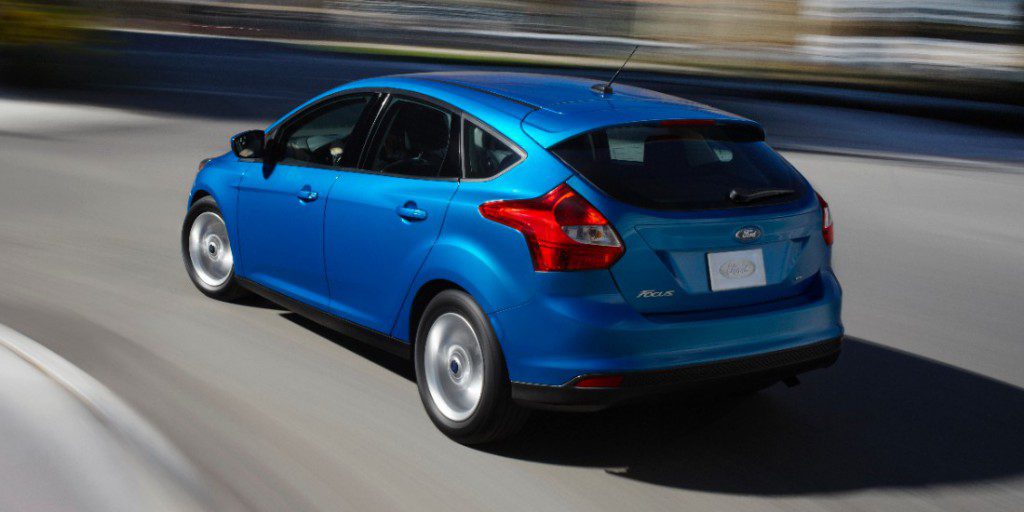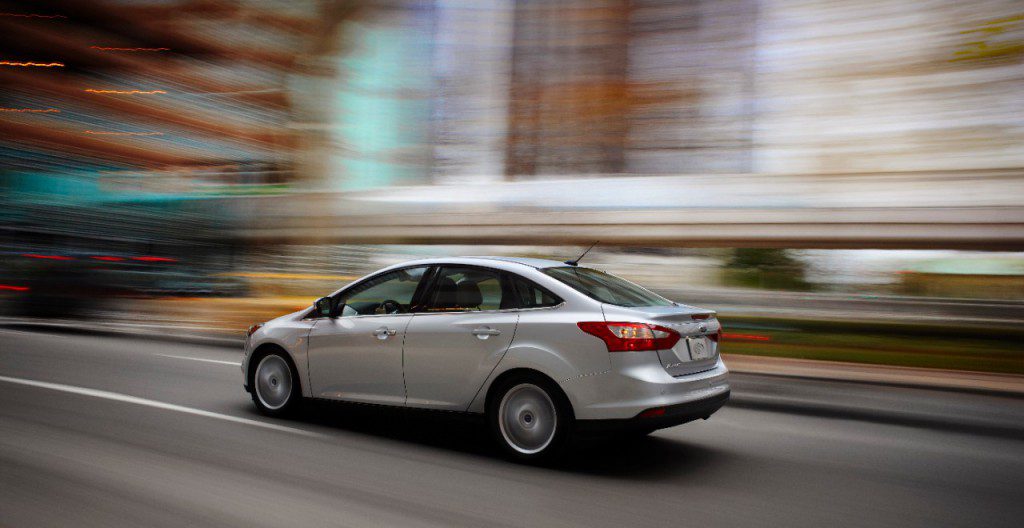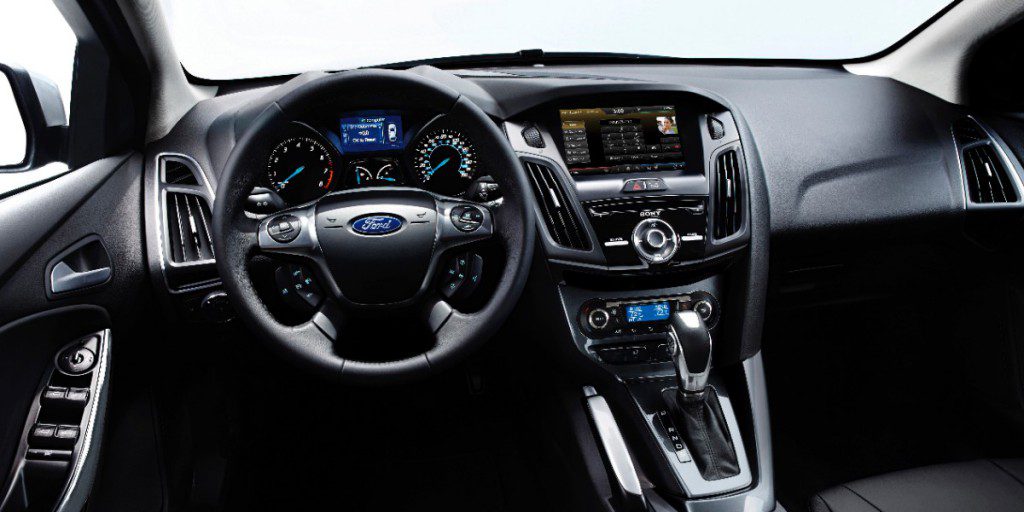| Compact car; Built in USA |
|
|
| Good condition price range: $4,400 – $20,800* |

2014 Ford Focus

2014 Ford Focus

2014 Ford Focus

2014 Ford Focus
| Pros: |
|
| Cons: |
|
Focus is a sporty, fun-to-drive small car that’s available with some unexpected high-end features, such as hands-free parallel parking. We prefer the manual transmission in this car, and kudos to Ford for making it available on more models for 2013. Pricing ranges from class-competitive to surprisingly high for a loaded Titanium version. The ST promises lots of power, but we were a bit disappointed in the chassis’ ability to handle it. Overall, Focus is a fine compact car and one that deserves a prominent place on your shopping list.
Overview
Focus was Ford’s bread-and-butter compact and the brand’s second-best-selling car behind the Fusion. Focus debuted in the U.S. market for the 2000 model year and received a complete overhaul for 2012. The changes resonated with the public, and dealers had a hard time keeping up with demand.
Like the smaller Fiesta, Focus derived its basic design from a platform Ford sells in several countries around the world. Also like its smaller sibling, this car was sold in the U.S. as a 4-door hatchback or 4-door sedan. Ford built the U.S.-market Focus in the U.S. It competed against a long list of other compact cars, that included the Chevrolet Cruze, Dodge Dart, and Honda Civic Sedan (none of which offered a hatchback). The Kia Forte, Mazda 3, and Nissan Versa each offered sedan and hatchback body styles.
All models except the ST had a 160-horsepower 2.0-liter 4-cylinder engine. Some Focuses sold in California and northeastern states used a version of this engine with 159 horsepower; those examples achieved Partial Zero Emission Vehicle status. A 5-speed manual transmission was standard on the S and SE and was offered as a no-cost option on the Titanium. Standard on the Titanium and optional on the S and SE was a 6-speed dual-clutch automated-manual transmission. Some SE models with this transmission included manual-shift capability.
The ST used Ford’s 2.0-liter “EcoBoost” 4-cylinder engine, which was turbocharged and produced 252 horsepower when used with premium-grade gasoline. The sole transmission for the ST was a 6-speed manual.
All Focuses were front-wheel drive.
The Ford Focus included a standard complement of expected and federally mandated safety features. Front- and rear-side airbags were standard across the board.
Ford also sold a hatchback version of this car called the Focus Electric, which we cover in a separate report.
Yearly Updates
| 2012 Focus |
| 2013 Focus A high-performance turbocharged ST model joined the Focus lineup for 2013. It came exclusively as a manual-transmission hatchback, with a significantly more-powerful engine. The rest of the Focus lineup was largely unchanged for 2013. Due to customer demand, Ford is expanded availability of a manual transmission to include the top-of-the-line Titanium model. |
| 2014 Focus The Focus SE gained a sport appearance package for 2014, but otherwise Focus was little changed. |
| 2015 Focus The 2015 Ford Focus got several worthwhile updates, including updated exterior styling, a retuned suspension, new infotainment features, standard rearview camera, available lane-keep-assist system, and availability of Ford’s 1.0-liter EcoBoost 3-cylinder engine. The high-performance ST model gained a flat-bottomed steering wheel, revised steering feel, and some new appearance options. |
